 Religion
Religion  Religion
Religion  Facts
Facts 10 Things You Never Knew about the History of Gambling
 Weird Stuff
Weird Stuff 10 Cool and Creepy Facts about Collecting Tears
 Humans
Humans The Ten Most Lethal Gunslingers of the Old West
 Misconceptions
Misconceptions 10 Phony Myths and Urban Legends That Just Won’t Die
 History
History 10 Amazing Roman Epitaphs
 Weird Stuff
Weird Stuff 10 Niche Subcultures That Are More Popular Than You Might Think
 Mysteries
Mysteries 10 Tragic Disappearances and Deaths in Joshua Tree National Park
 History
History 10 Ways Childhood Really Sucked in the Old West
 Music
Music 10 Name Origins of Famous Bands from the 1990s
 Religion
Religion 10 Mind-Blowing Claims and Messages Hidden in the Bible Code
 Facts
Facts 10 Things You Never Knew about the History of Gambling
 Weird Stuff
Weird Stuff 10 Cool and Creepy Facts about Collecting Tears
Who's Behind Listverse?

Jamie Frater
Head Editor
Jamie founded Listverse due to an insatiable desire to share fascinating, obscure, and bizarre facts. He has been a guest speaker on numerous national radio and television stations and is a five time published author.
More About Us Humans
Humans The Ten Most Lethal Gunslingers of the Old West
 Misconceptions
Misconceptions 10 Phony Myths and Urban Legends That Just Won’t Die
 History
History 10 Amazing Roman Epitaphs
 Weird Stuff
Weird Stuff 10 Niche Subcultures That Are More Popular Than You Might Think
 Mysteries
Mysteries 10 Tragic Disappearances and Deaths in Joshua Tree National Park
 History
History 10 Ways Childhood Really Sucked in the Old West
 Music
Music 10 Name Origins of Famous Bands from the 1990s
Top 10 Crazy Animal Facts You Don’t Know
As someone who loves nature trivia, I get very disappointed seeing the same 50 tidbits making the rounds on the internet like some greatest hits of the animal kingdom. Cheetahs are fast, hyenas are mean and everything in Australia wants to kill you. We know. So here are 10 random things in nature that I think you haven’t heard before.
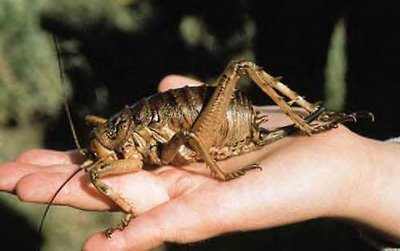
Actually it isn’t blood at all, but rather something called hemolymph. It’s been somewhere between 500-600 million years since humans and insects shared a common ancestor, so it is no surprise that there are a few differences. Hemolymph is copper-based, rather than the iron that runs in our veins, giving it a blue or greenish tint when it is oxygenated.
It’s not used to carry oxygen, however, as respiration through the skin is adequate for an insect’s oxygen needs. This means they can have a much more relaxed circulatory system. Their hearts beat much less frequently than our own, and can even even enter a state of rest to conserve energy.
A New Zealand insect called the Weta has been popping up on a lot of list sites lately because of a protein in its hemolymph that prevents ice crystals from forming. This is actually not that uncommon, as many beetles, flies and bees possess the same trait.
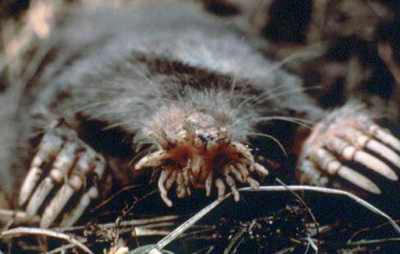
One of the simplest ways to annoy a cat is to pet it the wrong way. If you were to somehow tame a mole and stroke it from tail to head, however, the mole wouldn’t mind at all. The individual hairs on a mole’s body are each embedded in a sack of fluid, allowing them to lay in any direction against the skin with no discomfort or resistance.
It’s a very practical adaptation. When you live your life in tunnels that are no bigger than your own body, sometimes you have to go straight backwards. That’s a lot easier to do when your fur is always streamlined for any directional change.
The softness of mole fur has not gone without notice throughout history, and I’m told they make lovely coats. Between that and their status as a pest in human society many species of mole are now threatened with extinction.
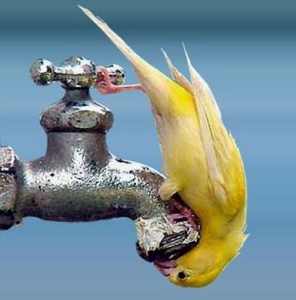
I’ve seen a few websites over the years postulate that birds could do pretty well in a zero-gravity environment, and one even speculated that the only reason we’ve never taken them up is because of hygiene issues. I can tell you right now that could not be further from the truth. Well, except maybe for the hygiene thing, because… Ew.
The single most important reason birds can’t live in space is because most all of them can’t swallow, including the actual swallow. While birds are pro-regurgitators, they rely on gravity to get their food and drink down in the first place. That is why you see them dip their beaks in water then lift their heads to let it trickle down. If we were to take birds up to the ISS, they would more than likely die of dehydration, if not drown trying to drink.
On a side note, pigeons have been taken up on the ‘Vomit Comet’, which is the plane that flies in long parabolic arcs to simulate zero-gravity for short periods of time. They didn’t do too well with the whole flying thing, either.
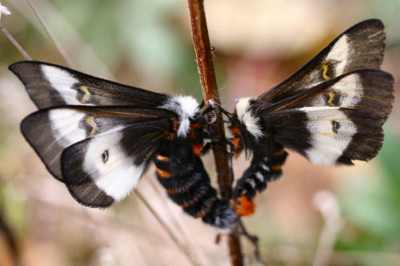
Bats are some of the most fascinating and well documented hunters in the animal kingdom, so being a nocturnal flying insect seems like it might as well be a death sentence. Turns out they are actually embroiled in an arms race 50 million years old. The major problem with echolocation is that the target knows you are coming as soon as you use it, just like in every submarine movie ever.
Many species of moths use this to their advantage, to the point where some of them can gauge the distance to their attacker and react with more urgency the closer they are. My favorite tactic is called “flight cessation”, otherwise known as falling.
Tiger moths take defense a step further by employing counter-measures. At nearly the last moment of the attack they will release a series of clicks in order to jam the bat’s sonar, causing them to miss as often as 4 out of 5 times in a recent study.
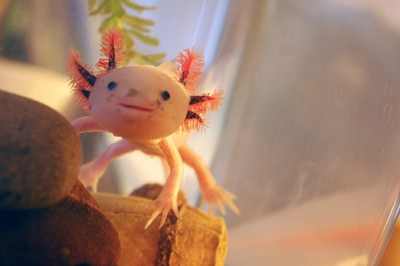
The axolotl is a salamander-like animal that grows to around a foot long, give or take. It is completely aquatic, vegetarian, and lives anywhere from 10 to 15 years. While its cousin the tiger salamander looks a lot like it during its larval stage, the axolotl just never gets around to having its own metamorphosis into a full-fledged salamander.
What is really fascinating, though, is that it can. By using iodine to stimulate the thyroid, something it lacks the hormones to do itself, the axolotl can be forced into undergoing a transformation that the species abandoned somewhere along the way.
Unfortunately the axolotl’s only native habitat is in the waters around Mexico city. Pollution, invasive fish species, and the fact that they are apparently delicious has reduced their numbers to critically endangered levels. More now exist in home aquariums than in the wild. I personally think they’re adorable, but they still end up on every list of “ugliest things ever” on the internet.
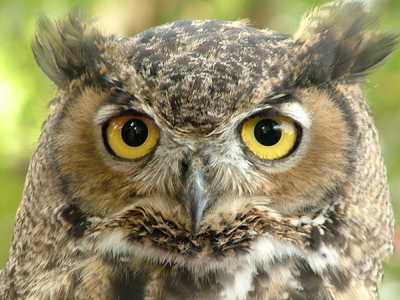
It is hard to look into the face of an owl and not think that sucker knows something you don’t. It does, actually, but that thing is how to kill and eat rodents with great efficiency and that’s about it. An owl’s eyes are quite large, but its skull… not so much. This leaves very little room for a brain that, while capable of processing very large amounts of optical data, just doesn’t have the power to do much critical thinking.
It is incredibly difficult to train them to do even the most rudimentary tasks. When Gary Gero, an owl trainer that worked on the Harry Potter movies, was asked where the term “wise old owl” came from, he replied with, “I don’t know who coined the phrase, but I certainly know it wasn’t an owl trainer.”

Every saltwater fish tank had caulerpa taxifolia in it when I was a kid. It’s an impressively hearty and vibrant species of seaweed, which produces a toxin that makes it inedible to almost all aquatic life. This is great for certain species of tank fish that like to destroy your live decorations. So what happens when a fast-growing and poisonous plant happens to get into an ecosystem where it doesn’t belong? It gets dubbed “The Killer Algae”, and then tossed right onto the IUCN’s list of most invasive species in the world.
How it got into the Mediterranean Sea is as much a matter of debate as its effects, but it only took a decade for taxifolia to cover an estimated 30 square kilometers by the early 90’s. Some research implies that its introduction might even be overall positive, but the fact remains that many native species simply cannot coexist with it.
The saddest part is that the invasion was discovered early. Debate over whose fault it was prevented it from being dealt with, and now it may be too late to do anything more than watch what happens.
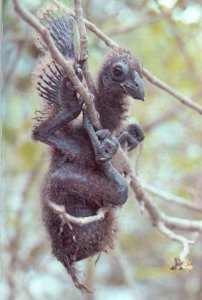
On to an animal that is doing just fine. The hoatzin is a really neat looking bird that tastes awful and smells worse, which are very useful advantages for being left alone by humans. There are a few types of birds that hatch with some form of spurs or claws on their wings, but in hoatzin chicks they actually have a purpose.
The babies are active climbers, using the pair of claws on each wing for extra grip as they make their way around the trees. Falling? That’s okay, they can swim pretty well too. In fact the only thing they aren’t so good at is flying. A newborn will have to wait months before it’s developed enough to fly, and the adults are notoriously clumsy.
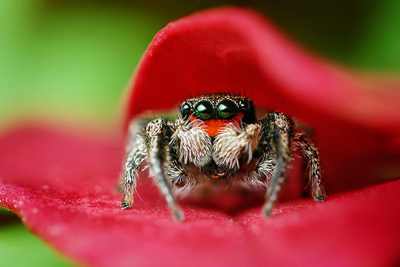
Just because something has eight eyes doesn’t necessarily mean it has great eyesight. Field of vision isn’t the same as acuity. It isn’t really an issue for most spiders since they hunt by setting a trap and waiting, but not so in the case of more nomadic hunters like the jumping spider.
Only in recent years have researchers begun to understand how the jumping spider’s eyes actually work. The two primary eyes are incredibly complex. Even though the lenses are fixed, they are able to achieve some form of binocular vision by moving the retina around behind it. Those retina are composed of separate layers of light sensitive cells.
An image that’s in focus on one layer is out of focus on the one right above it, so by comparing the sharp image to the blurry one the spider is able to judge distance quite accurately. It does this so well that a Japanese company is currently attempting to apply the concept to a camera potentially capable of filming in 3D with a single lens.
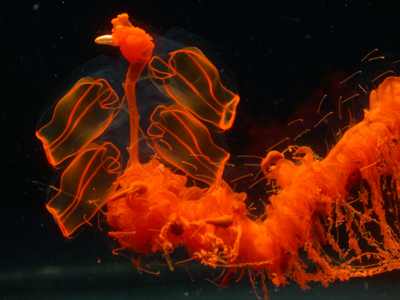
Siphonophores raise some really important philosophical questions about what makes an individual organism, but first I should probably explain what they are. The most famous example is the Portuguese man o’ war, which is often incorrectly classified as a jellyfish. Other notable members include the praya dubia which is one of the longest creatures we know of at an astounding 50-60 meters, and a recently discovered species of the Erenna genus that produces an extremely rare red bioluminescense.
The Siphonophore is composed of zooids, each a singular animal within the colony, which are specialized for certain tasks. These zooids are capable of performing their duties on their own to the benefit of the collective, but they must rely on others types of zooids to perform the functions they cannot. This doesn’t necessarily make them individuals. Despite all the things that separate from the rest of the colony, the entire siphonophore still grows from a single egg.
So are they one creature or many? That’s where it gets complicated. Zoom back far enough and it certainly looks and behaves as one animal, but the closer you examine it the more distinctive the pieces become. Because they hover right on the line between colonial and a complex multicelled organism the siphonophore may hold some very important clues as to how evolution could have bridged that gap. That, to me, is truly amazing.








